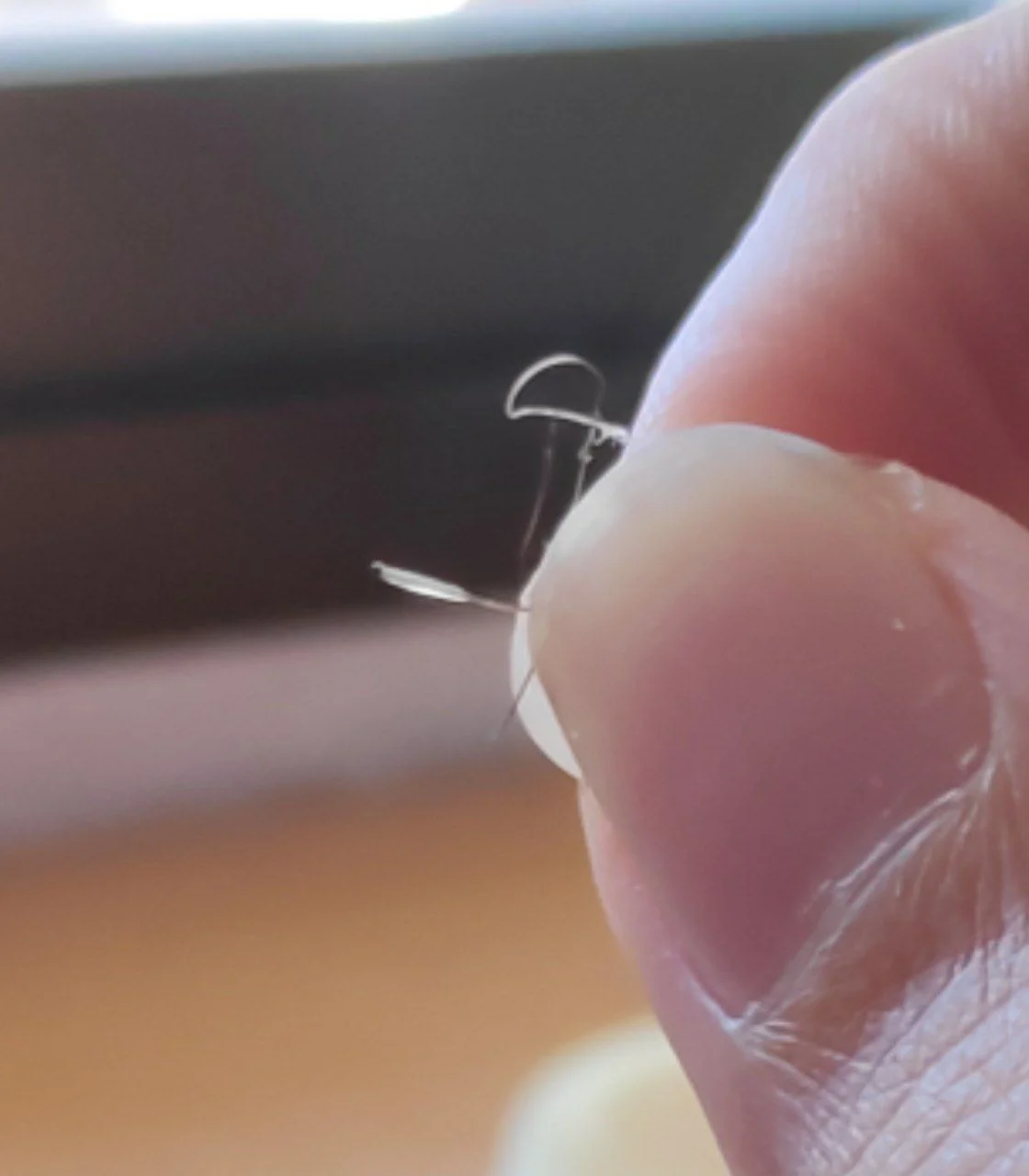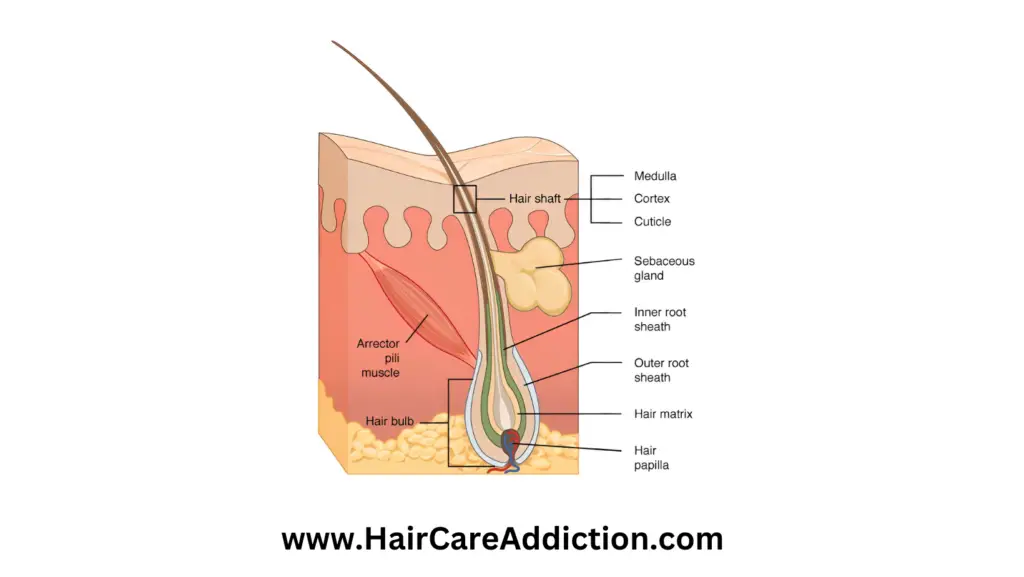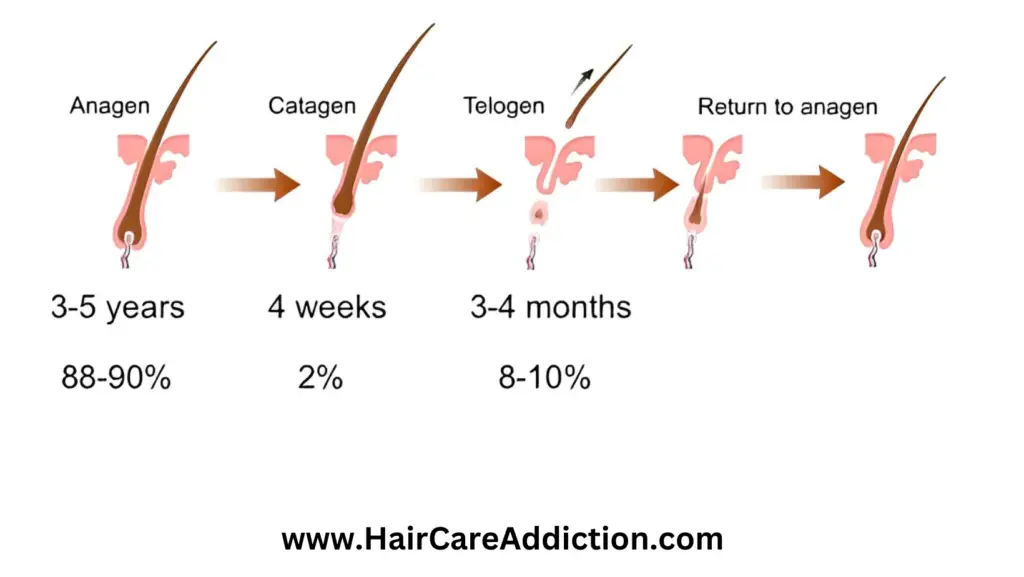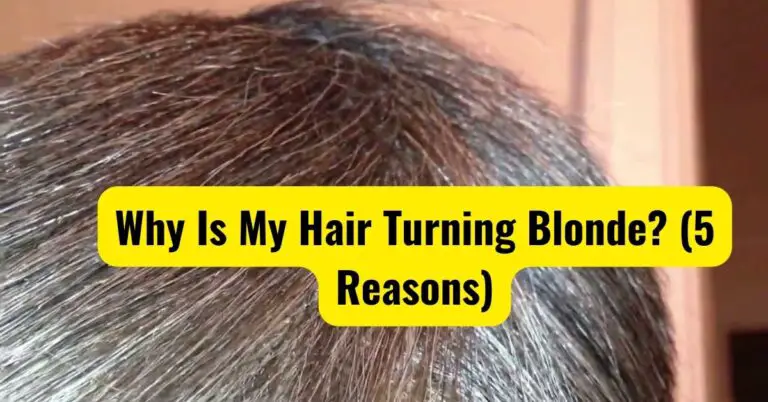Black Bulb Vs White Bulb Hair: What’s The Difference

Hair shedding is a natural part of the hair growth cycle, and it’s typical for individuals to lose about 50 to 100 hairs per day.
When shedding, the hair bulb, the part at the end of the hair strand that was inside the scalp, might be visible.
Interestingly, the color of the hair bulb—whether black or white—can provide insight into the nature and condition of hair loss.
Quick Answer: When you pull out hair which is in catagegn or transition phase of hair growth cycle, you’ll see usually see balck bulb. And, hair fall either naturally or due to androgen alopecia results in white bulb hair. These hair are in telogen or resting phase.
In this article, you’ll find out the difference between black bulb and white bulb hair, and its relationship with hair loss. Also, find out how to stop hair loss and promote hair growth. So, keep reading.
Hair Growth Cycle and Anatomy of Hair
Anatomy of Hair

First, you need to understand the difference between hair bulb and hair club. White stuff that you see at the end of hair when it fall out is not hair root or hair follicle. It is hair club.
In simple terms, hair consists of hair hair shaft and hair hair follicle along other structure like sebaceous gland and arrector pili muscle.
Hair root/bulb is live part of hair which which never comes out when hair fall. It creates kertanin and melanin which is transfer to hair shaft leading to its continuous growth and black color.
Hair club present at the end of a hair shaft which connect it with the hair root and through wich keratin and melanin pass. It is dead part of hair. So, if you see it at the end of hair shaft, don’t worry. New hair will still comes out in that place, which, however depends on the condition of hair fall.

Now, you know basic anatomy of hair, let’s move on to the hair growth cycle to better understand difference between black bulb and white hair bulb.
Hair Growth Cycle
The hair growth cycle, also known as the hair cycle, consists of several phases that determine the growth, shedding, and regrowth of hair. These phases include:
Anagen Phase:
- This is the active growth phase of the hair follicle.
- Hair cells in the follicle divide rapidly, leading to hair growth.
- This phase can last for several years, with hair growing at a rate of approximately 1 centimetre per month.
- The length of the anagen phase is genetically determined and varies among individuals.
Catagen Phase:
- This is a transitional phase that follows the anagen phase.
- Hair growth slows down, and the hair follicle shrinks.
- This phase typically lasts for a few weeks.
Telogen Phase:
- This is the resting phase of the hair cycle.
- During this phase, the hair follicle is inactive, and hair is not actively growing.
- Approximately 10-15% of hair follicles are in the telogen phase at any given time.
- This phase lasts for several weeks to a few months.
Exogen Phase:
- This is a subphase within the telogen phase where old hair is shed to make way for new hair.
- Hair naturally falls out during this phase, and it is a normal part of the hair cycle.
After the exogen phase, the cycle typically repeats itself, and a new hair begins to grow from the same follicle, entering the anagen phase once again. The length of the hair growth cycle and the proportion of time spent in each phase can vary from person to person and may be influenced by factors such as genetics, age, and overall health.

What is Black Bulb Hair and its Causes
Black bulb hair is the type of hair that has a dark or black-colored bulb at its root, which is commonly found in people with thick and coarse hair texture. These hairs are in catagen phase of growth cycle.
It is black because melanin is still there. Again, black sheath that you see is not hair follicle so don’t fear that your hair will not grow again.
Cause: Mainly, you’ll see hair with balck bulb at end when you forcefully pull out from the scalp. However, it can bee seen in other condition such as Post Chemotherapy, Anagen Effluvium, Loose Anagen Syndrome. These are all pathological condition but seen very rarely.
What is White Bulb Hair and its Causes
White bulb hair is the type of hair that has a white or light-colored bulb at its root.
The white color of the bulb indicates that the hair is in the telogen phase, which is the resting phase of the hair growth cycle.
In telogen phase, hair start to fall out naturally. Hair root stop building melanin and keratin.
And, hair club start to get seprated from the hair root and it also lack melanin, which gives it white color.
Cause: Telogenic hair loss which is natural. But, this can occur in case of Androgenic alopecia.
Here are the main difference between telogenic ( natural) hair loss and Alopecia:
| Telogenic Hair Loss | Androgenic Alopecia |
| In telogenic hair loss, there will be hair of same thickness. It occurs naturally. Other cuase can be stress, disease, pregnancy, excessive use of hair product and styling tools. In this case, hair will grow back within 3-6 months on itself. But, taking hair supplement and vitamin will definately boost hair growth and makes it healthy. (Recommended) | In androgenic alopicia, hairs that fall out have variable thickness. And, in most case, there will be family history of androgenic alopecia. To treate androgenic alopecia, you can use minoxidil or go for hair transplant if it is of high grade. |
HCA Recommended Best Hair Supplement and Vitamin

Black Bulb Hair vs. White Bulb Hair
The main difference between black bulb hair and white bulb hair is the color of the bulb at the hair root. Black bulb hair has a dark or black-colored, which you’ll find out when you forcefully pull out the hair. It is very normal and hair will grow back.
In contrast, white bulb hair has a white or light-colored bulb and is seen in natural telogenic hair fall. However, it can also be seen in androgenic alopecia.
Do Miniaturized Hairs Have White Bulb?
Miniaturized hairs, which are the result of hair follicles shrinking due to factors like genetic predisposition or hormonal imbalances, can have a white bulb.
Miniaturized hairs is seen in androgenic alopecia, in which hair present in telogenic stage fallout and it contain white sheath at the end.
How to Stop Hair Loss
Hair loss is a concern for many people and can result from factors such as aging, genetics, hormonal changes, illness, or nutritional deficiencies. While some hair loss is inevitable, certain measures can be taken to promote hair health and potentially slow down the process. Here’s a comprehensive guide:
Maintain a Balanced Diet: Hair requires vital nutrients to grow, such as protein, iron, vitamins A, C, D, and E, and omega-3 fatty acids. Incorporating foods rich in these nutrients can support hair health.
Avoid Heat and Chemical Styling: Overuse of heat tools, chemical treatments, and hair color can damage hair, leading to breakage and thinning. Consider reducing their use or applying heat protectant sprays before styling.
Stay Hydrated: Drinking adequate water contributes to overall health, including the health of your hair.
Regular Exercise: Regular physical activity helps regulate hormones and promotes healthy circulation, supporting hair growth.
Proper Hair Care: Gentle hair care practices such as using a wide-toothed comb, minimizing tugging or pulling, and avoiding tight hairstyles can help prevent breakage and protect your hair.
Avoid Stress: High-stress levels can contribute to hair loss. Implementing stress management techniques, such as meditation, yoga, or deep breathing, can be beneficial.
Limit Sun Exposure: Overexposure to the sun can damage your hair. Use hats or scarves to protect your hair when you’re in the sun for extended periods.
Regular Scalp Massages: Massaging the scalp can stimulate blood circulation, promoting hair growth. Use a few drops of essential oils like rosemary or lavender mixed with a carrier oil for added benefits.
Consult a Professional: If you’re experiencing significant hair loss, it’s best to consult a professional. Dermatologists and trichologists can diagnose the cause of your hair loss and provide targeted treatment options. This could include minoxidil (Rogaine), finasteride (Propecia), or certain laser treatments.
Regular Check-ups: Underlying health issues, such as thyroid problems or hormonal imbalances, can contribute to hair loss. Regular health check-ups can help identify and address these problems early.
While some hair loss is normal, sudden or severe hair loss should not be ignored. A balanced diet, a healthy lifestyle, proper hair care, and regular medical check-ups can go a long way in maintaining your hair health. However, if hair loss becomes a concern, professional help should be sought to identify any underlying issues and offer a targeted treatment plan.
Conclusion
Understanding the difference between black bulb hair and white bulb hair can help you better understand your hair’s natural growth cycle and when to be concerned about hair loss.
However, if you’re experiencing excessive hair loss or notice any significant changes in your hair’s thickness or texture, it’s essential to consult a dermatologist for further evaluation.
Remember, to include healthy diet, excercise and use of hair supplement and vitamin in your daily routine.





![Why Does My Hair Flip Up at the Ends? [Real Reason]](https://haircareaddiction.com/wp-content/uploads/2023/09/why-does-my-hair-flip-up-at-the-ends.jpg)
